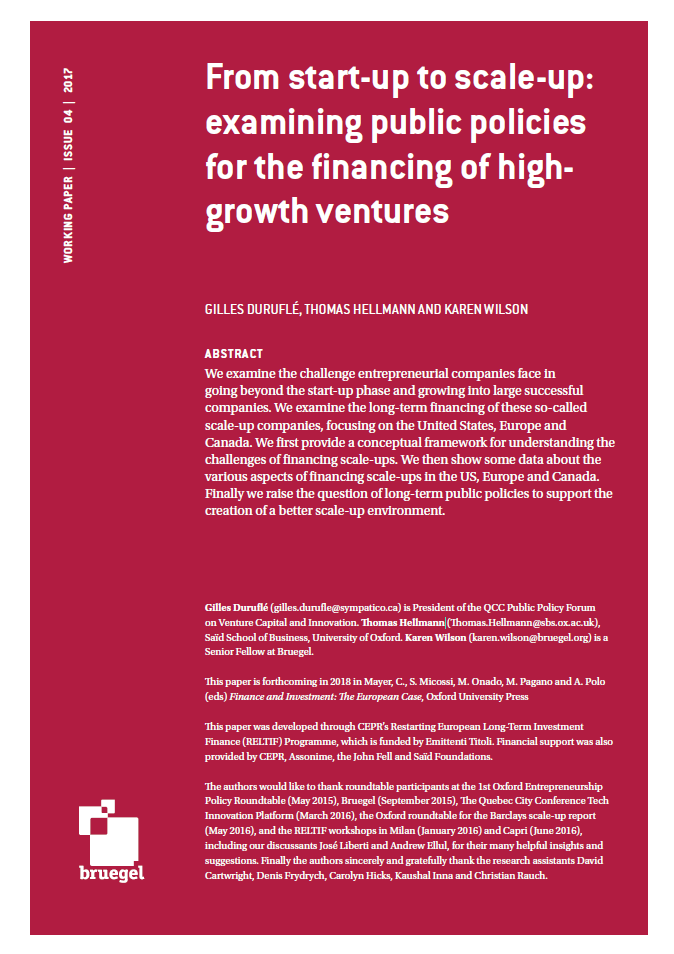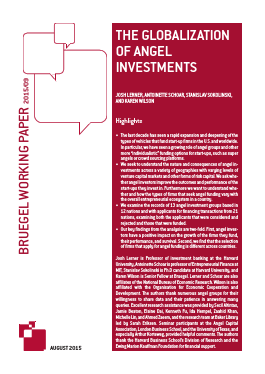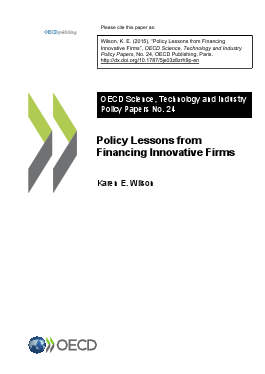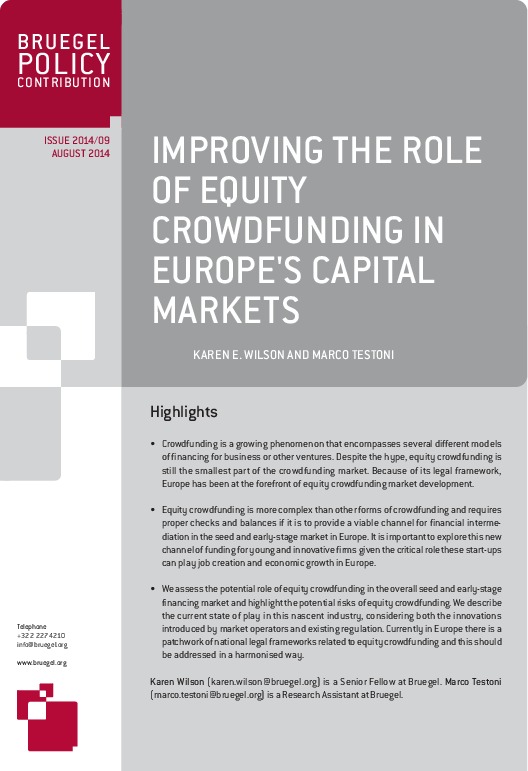Blog Post
Are European yollies more hampered by financial barriers than their US counterparts?
The persistent deficiency in private R&D spending in Europe compared to the United States can be almost entirely accounted for by the EU having fewer young firms, in the mould of Google or Amazon among its leading innovators. Even more importantly, these yollies (young leading innovators) that Europe does have are less R&D intensive. Why do European yollies invest less in R&D than their US counterparts?
Young innovative firms in particular are more sensitive to external finance barriers
The persistent deficiency in private R&D spending in Europe compared to the United States can be almost entirely accounted for by the EU having fewer young firms, in the mould of Google or Amazon among its leading innovators, as previous Bruegel research has shown (Veugelers and Cincera, 2010). Even more importantly, these yollies (young leading innovators) that Europe does have are less R&D intensive. Why do European yollies invest less in R&D than their US counterparts? An often-discussed barrier to innovation, especially in Europe, is the difficulty of accessing external funding. Young innovative firms in particular are more sensitive to external finance barriers because they more likely to lack sufficient internal funds for their investment projects (Hall, 2005). Furthermore, younger firms might find it more difficult to transact with external financiers, because they do not have established reputations and might be working on more risky innovative projects compared to established firms.
In Cincera, Ravet and Veugelers (2015), we further investigated this financial constraint hypothesis for our set of world-leading innovators to see if it could explain the lower inclination of EU yollies to invest in R&D compared to the US. We use a commonly used methodology in the empirical literature to assess financing constraints for investment decisions, which is to include in a standard model explaining investment decisions the availability of internal finance (usually cash flow) (Fazzari et al, 1988). The idea behind the methodology is to measure the importance of retained earnings in the R&D investment decision. This approach allows us to test the provision of additional cash to a company, and observe whether they use it for investment or not (Hall and Lerner, 2010). If they pass it to shareholders, it means either there is no good investment opportunity, or the cost of capital has not fallen. If however, they use the additional amount of cash for investment, this signals that the firm had access to unexploited investment opportunities for which external finance was too costly. A higher sensitivity of R&D investments to cash flow movements can thus be interpreted as evidence of tighter financial constraints.
We applied this test to our set of world-leading R&D investors. We used the successive editions of the EU industrial R&D investment scoreboard (2004-08) assembled by the European Commission Joint Research Centre Institute for Prospective Technological Studies (JRC-IPTS), and matched this data to company account information. According to JRC-IPTS, these scoreboards are representative of more than 85 percent of all R&D carried out in the private sector worldwide. Employing state of the art econometric techniques, which allow adjustments to be made for other influencing factors that might contaminate the interpretation of the results, we analyse how sensitive R&D investments are to cashflow movements, suggestive of financial constraints.
R&D investments made by EU leading innovators are more sensitive to cashflow movements
Our results confirm that the R&D investments made by EU leading innovators are more sensitive to cashflow movements than their US counterparts, particularly in high-tech sectors. Furthermore, when looking at the age structure of leading innovators, we find that R&D investments by yollies[1] are significantly more sensitive to the availability of internal finance, compared to their longer-established counterparts, which suggests that yollies face greater financing constraints when investing in R&D. This higher sensitivity of young firms holds only for EU yollies. US yollies seem to face no significantly different cash sensitivity compared to longer-established US firms. The long-term coefficient associated with the cash-flow variables is about .099 for EU yollies against .03 for US yollies. Particularly in high-tech sectors, for which R&D projects are more likely to be critical, EU yollies are significantly more sensitive to cashflow movements for their R&D investments than US yollies.
This greater cashflow sensitivity of R&D investments, which suggests financial constraints, could thus go a long way to explain the lower presence and the lower R&D investment intensity of young world-leading innovators in Europe compared to the US, in particular in high-tech sectors, which could in turn explain the EU’s persistent R&D deficit.
This evidence, when corroborated by further analysis, has significant implications for the EU’s innovation policy agenda. In order for Europe to improve its business R&D performance, this evidence suggests that policies need to address the financial constraints on risky R&D investments faced by leading innovators in Europe, especially by yollies and in high-tech sectors. To improve Europe’s innovative capacity, European policymakers should look beyond reducing financial barriers for innovative start-ups, by providing small amounts of public funding to start-ups. They should also make it easier to access external finance for the larger risky R&D projects of those companies that are vying for global innovative leadership.
References
Veugelers, R. and M. Cincera, 2010, Europe’s Missing Yollies, Bruegel Policy Brief 2010/06, Bruegel Brussels
Veugelers, R. and M. Cincera, 2010, Young Leading Innovators and EU’s R&D intensity gap, Bruegel Policy Contribution 2010/09, Bruegel Brussels
Cincera, M, J. Ravet & R. Veugelers, 2015, R&D financing constraints of younger aged leading innovators in the EU and the US, Economics of Innovation and New Technology, forthcoming.
Fazzari S.M., R.G. Hubbard and B.C. Petersen (1988). Financing Constraints and Corporate Investment. Brookings Papers on Economic Activity, 1, 141-195.
Hall B.H. and J.Lerner (2010). Financing R&D and Innovation, in B.H. Hall and N. Rosenberg (eds.), the Economics of Innovation, Elsevier Handbook of the Economics of Innovation.
Hall, B.H., (2005) “The Financing of Innovation,” in Shane, S. (ed.), Blackwell Handbook of Technology and Innovation Management, Oxford: Blackwell Publishers, Ltd., 2005.
[1] In line with Veugelers and Cincera (2010), we define young as those leading innovators established after 1975. But the results are consistent when using later cut-off dates.
Republishing and referencing
Bruegel considers itself a public good and takes no institutional standpoint. Anyone is free to republish and/or quote this post without prior consent. Please provide a full reference, clearly stating Bruegel and the relevant author as the source, and include a prominent hyperlink to the original post.












